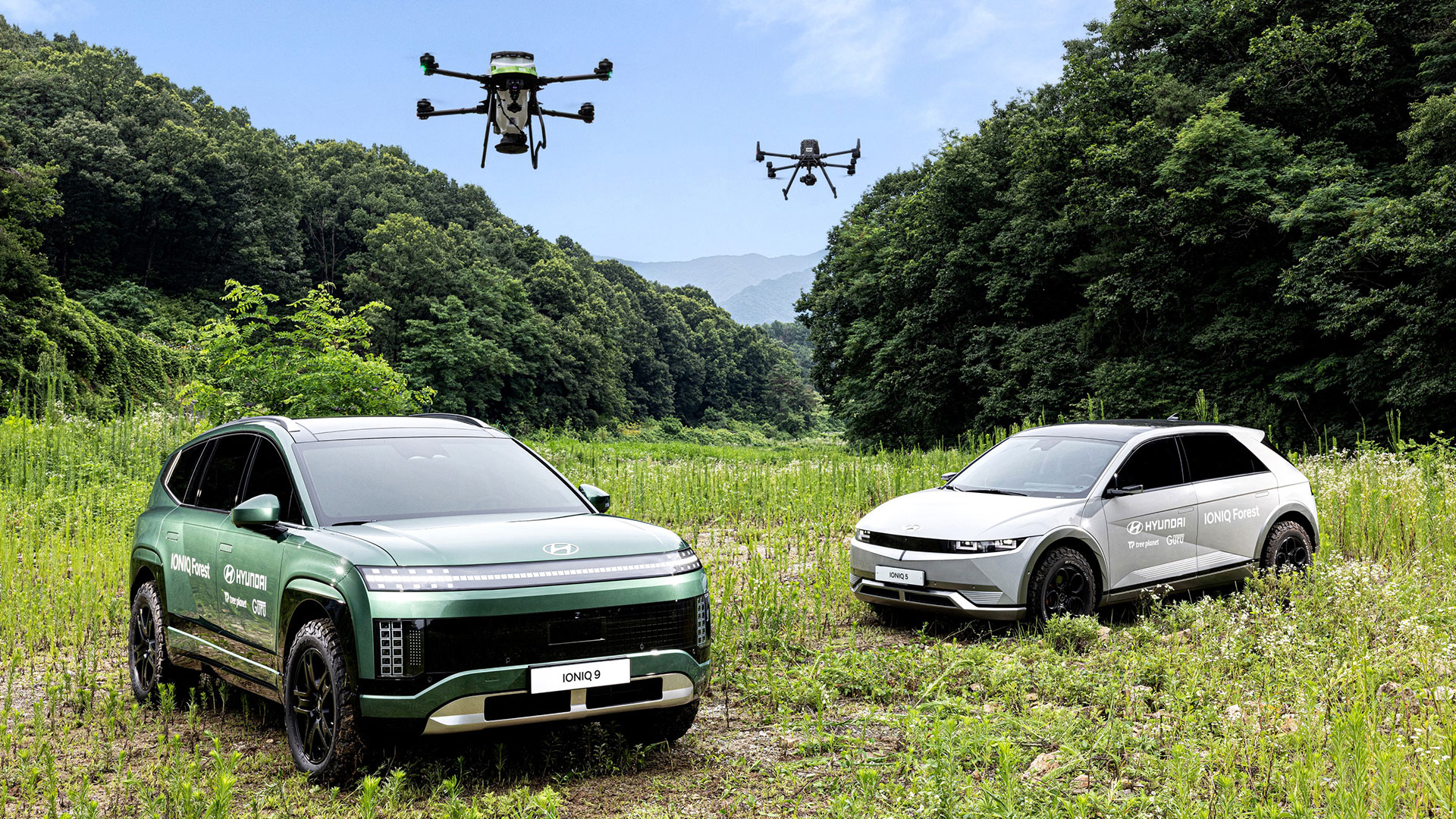How Hyundai IONIQ 9 Seed Ball Drone Station Is Revolutionizing Post-Wildfire Forest Recovery

Hyundai’s IONIQ 9 Seed Ball Drone Station: Revolutionizing Forest Recovery After Wildfires
The Unveiling of a Pioneering Solution
A bold new chapter in environmental technology has begun as Hyundai launches the IONIQ 9 Seed Ball Drone Station, an advanced electric vehicle engineered to replant forests devastated by fire. Outfitted with state-of-the-art charging and drone deployment capabilities, this mobile command center operates in regions of South Korea scarred by recent wildfires. Designed to speed up ecosystem restoration, it drives directly into burned areas, enabling rapid, large-scale dispersal of seeds where reforestation is urgently required.
As forests worldwide face mounting threats from climate change and natural disasters, conventional replanting methods often struggle to keep pace with the scale of devastation. The IONIQ 9 Seed Ball Drone Station marks a distinct shift toward integrating electric mobility and aerial robotics to address these challenges. By transforming the flagship IONIQ 9 SUV into a command hub, Hyundai empowers restoration teams with the agility, efficiency, and sustainability needed to tackle even the most inaccessible terrain.
Innovative Technology for Large-Scale Environmental Impact
At its core, the system operates as an orchestrator for unmanned aerial vehicles—drones designed to transport and release seed balls across landscapes where human intervention would be slow or hazardous. Each seed ball is a self-contained packet of soil, clay, and native seeds, designed for optimal germination and resilience in harsh post-fire soils. Onboard the vehicle, an integrated vehicle-to-load system delivers rapid charging for both the SUV and its aerial fleet, ensuring uninterrupted operations in remote locations.
The functional transformation of the IONIQ 9 includes specialized features that support the program's mission. With the third row of seating adapted into a pilot workspace, teams can coordinate drone flights in real time using dual-screen consoles, a dedicated operations computer, and stable communication links. A rear-mounted launch pad enables takeoff and retrieval without the need for complex ground setups, while the EV’s zero-emission profile minimizes environmental disturbance during restoration efforts.
Origins, Collaborations, and Strategic Milestones
This initiative follows the successful deployment of earlier monitoring stations, evolving from data collection to active reforestation. Partnerships with the Korea National Arboreta and Gardens Institute, as well as specialized environmental ventures, have enabled a rapid transition from concept to field application. The choice of South Korea’s Uljin region highlights both the urgency and scalability of the solution—a response to wildfires that exposed critical gaps in conventional replanting methods.
Hyundai’s broader strategy aligns with its global environmental stewardship program that engages communities and environmental organizations to elevate climate action in diverse regions. The integration of advanced electric platforms with drone technology not only accelerates forest regrowth but also serves as a template for similar interventions in disaster-stricken areas worldwide.
Pivotal Features and Key Technology Terminology
Central to the vehicle’s effectiveness are its adaptable drone systems, capable of navigating rugged terrain and reaching areas where traditional crews or equipment cannot operate. The “seed ball” itself is both a product and a strategy—combining locally-sourced materials to shield seeds from predation and harsh climatic conditions until they are ready to germinate. The vehicle’s “vehicle-to-load” system represents a leap in mobile power management, making it possible to recharge drones wherever restoration crews are stationed.
This approach translates into rapid, wide-reaching recovery: multiple drones can cover more ground, drop thousands of seed balls in a single mission, and remotely monitor growth patterns. With enhanced monitoring tools housed in the mobile center, crews gain immediate feedback on planting success and environmental conditions, refining future runs for greater effectiveness.
Looking Forward: The Road to Greener Landscapes
The introduction of this solution signals a new era where sustainability, cutting-edge mobility, and restoration science intersect to create measurable ecological benefits. Its initial use in South Korea stands as both proof of concept and promise to other regions grappling with forest loss. By bringing together emissions-free operations, advanced robotics, and practical environmental engineering, this model represents a scalable blueprint for rapid disaster response and habitat regeneration.
With each deployment, the fusion of electric mobility and autonomous technology is poised to redefine the scope of environmental recovery. Empowering restoration teams with these tools means faster regrowth, improved biodiversity, and a tangible pathway toward climate resilience. In a world increasingly shaped by extreme events, this innovation raises the bar for what is possible in eco-restoration—where technology and nature collaborate on the open road.
